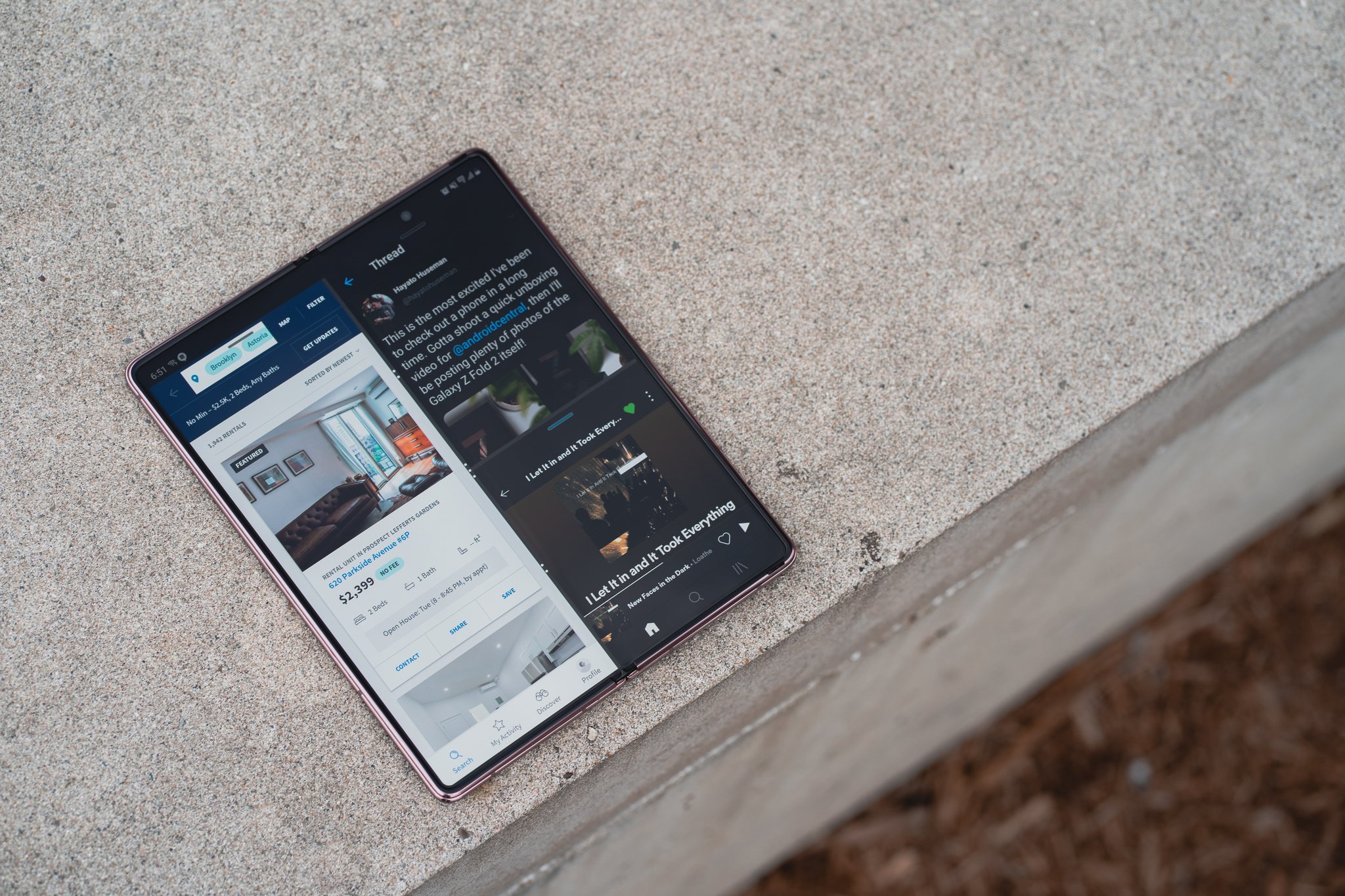POCO X3 Pro review - The undisputed value champion of 2021 - Android
The X3 Pro sets a new standard for performance in the budget segment.
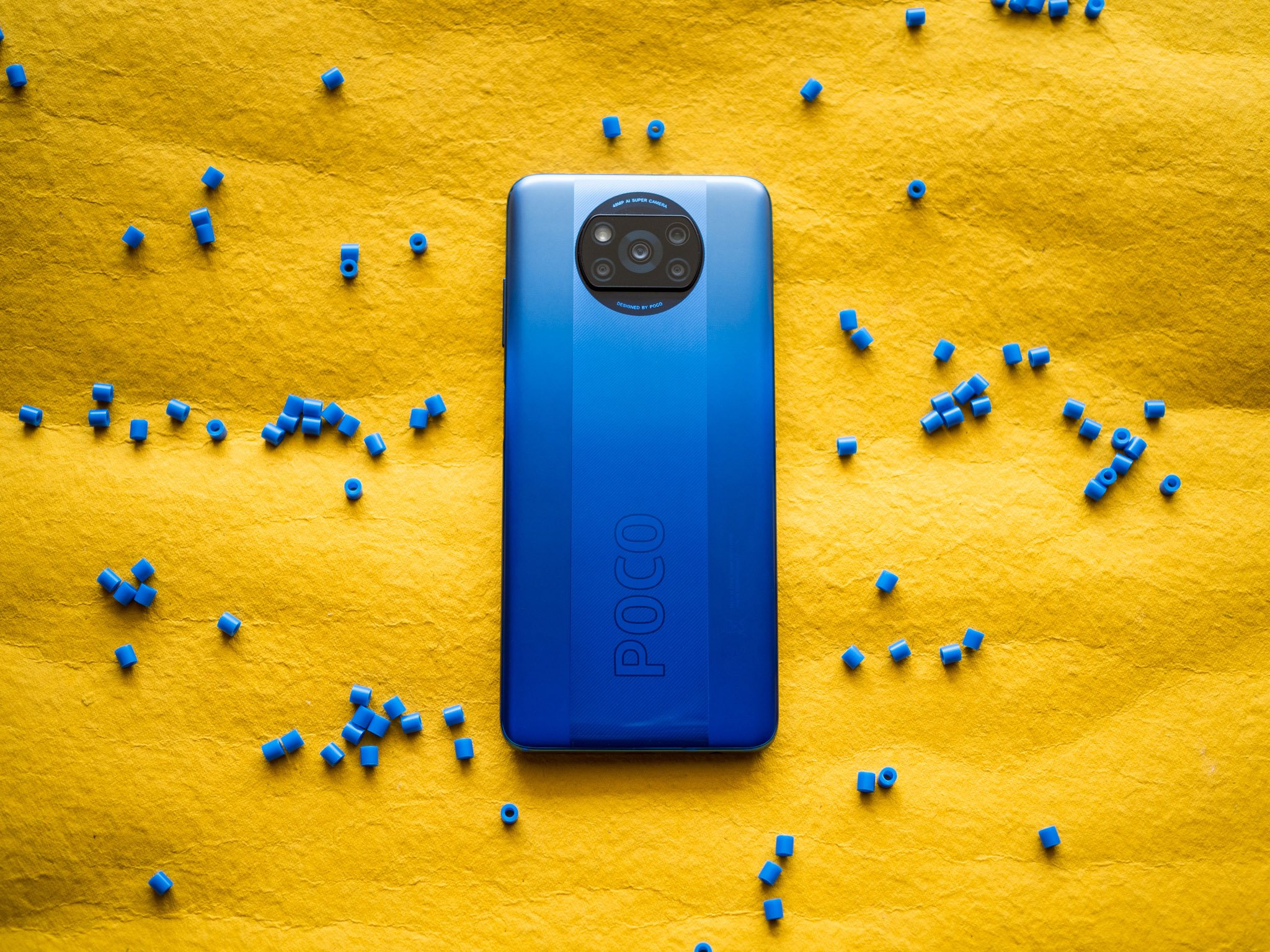
POCO burst onto the scene three years ago with the POCO F1, with that phone offering a value package that is yet to be matched. The F1 wasn't a perfect phone by any measure — it had display and build quality issues, and it had plenty of software buds — but the fact that you could get flagship-tier performance from a phone that retailed for under $300 immediately endeared the enthusiast community to the F1.
POCO is now trying to recreate that with the X3 Pro. The phone is a turbocharged version of the POCO X3 that debuted at the end of last year, and the key highlight is that it is powered by a Snapdragon 860 — a higher-clocked version of the 2019 flagship Snapdragon 855+ chipset.
The flagship chipset immediately makes the X3 Pro stand out. The phone is available in India for just ₹18,999 ($260) and is set to go on sale globally for under $300, and there aren't any other phones in this category that come close to the performance figures of the X3 Pro. In short, this is one of the best cheap Android phones you can buy.
The phone also switches things up on the camera side, now featuring a 48MP primary lens — the regular X3 has a 64MP module — and an 8MP wide-angle lens. With the standard X3 targeted as a mainstream device, it's clear that Xiaomi is positioning the X3 Pro as a gaming-focused phone, so let's find out if the device holds up to its promises in real-world use.
POCO X3 Pro review:
- Price and availability
- Design and display
- Performance and battery
- Cameras
- Software
- The competition
- Should you buy?
POCO X3 Pro

Bottom line: The POCO X3 Pro delivers blistering performance in the budget segment, easily beating every other phone in the category. You also get two-day battery life and 33W fast charging, a smooth 120Hz LCD panel, stereo sound, 3.5mm jack, IP53 water resistance, and Android 11 out of the box. If you're looking to upgrade to a new budget gaming phone, look no further.
The Good
- Outstanding battery life with 33W charging
- Class-leading performance
- Stellar 120Hz LCD display
- Stereo sound
- 3.5mm jack, IP53 water resistance
The Bad
- Bulky
- No NFC in India
₹18,999 at Flipkart
About this review
I'm writing this review after using the global version of the POCO X3 Pro for a week on Jio's 4G network in Hyderabad, India. The phone was running MIUI 12.0.2.0 (RJUEUXM) based on Android 11 out of the box and received an update to MIUI 12.0.4.0 on day one.
POCO X3 Pro: Price and availability
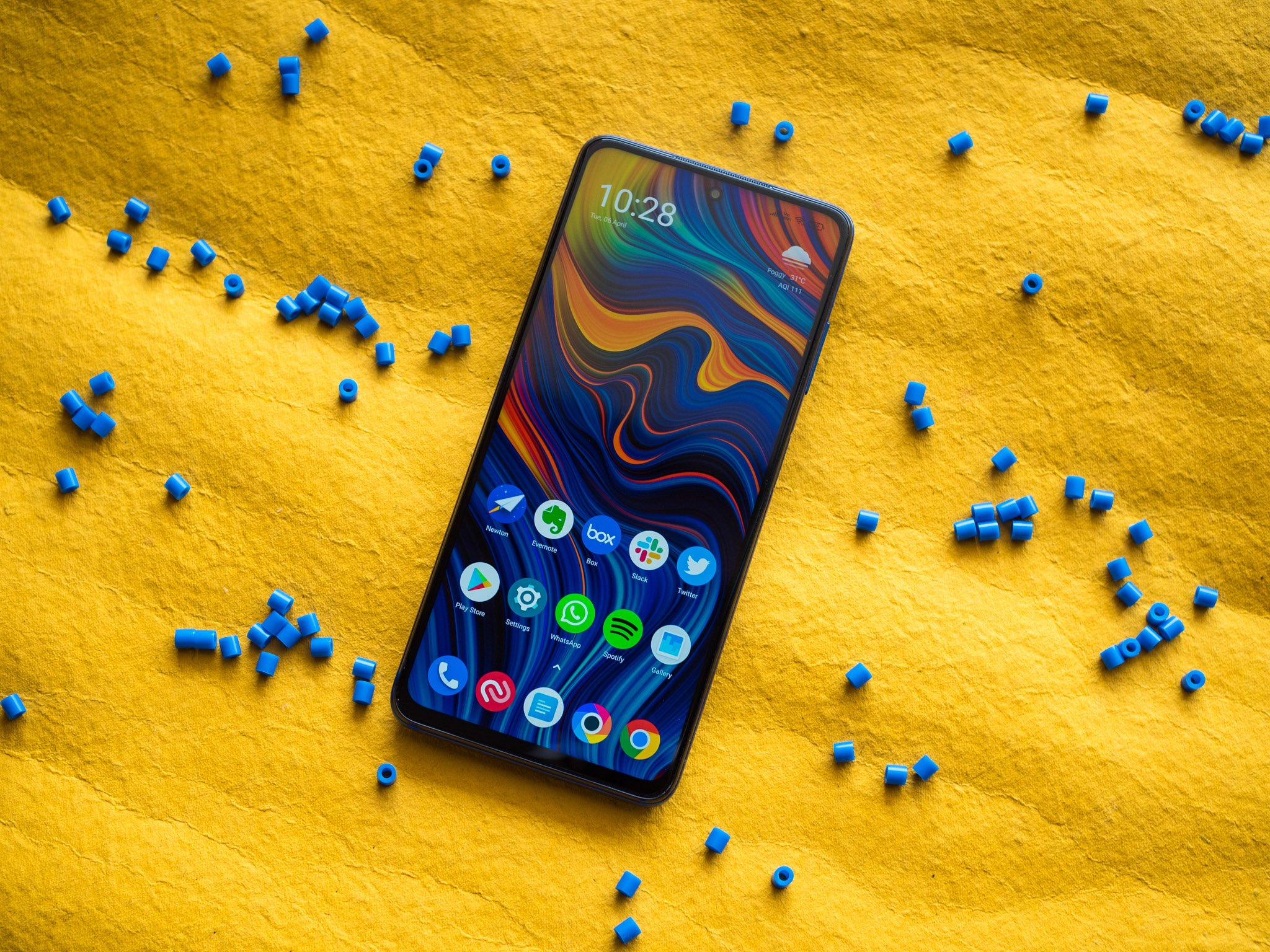
The POCO X3 Pro was unveiled on March 23. The phone is now up for sale in India, and it is available in two configurations: a 6GB/128GB edition that costs ₹18,999 ($260), and an 8GB/128GB model that retails at ₹20,999 ($285).
POCO is also set to kick off sales of the X3 Pro in the UK and other European markets in the coming weeks. The phone will be available with up to 8GB of RAM and 256GB of storage, and the base 6GB/128GB version will debut at €249 ($295) with an introductory price of €199 ($235). The phone is available in Frost Blue, Phantom Black, and Metal Bronze color options.
POCO X3 Pro: Design and display
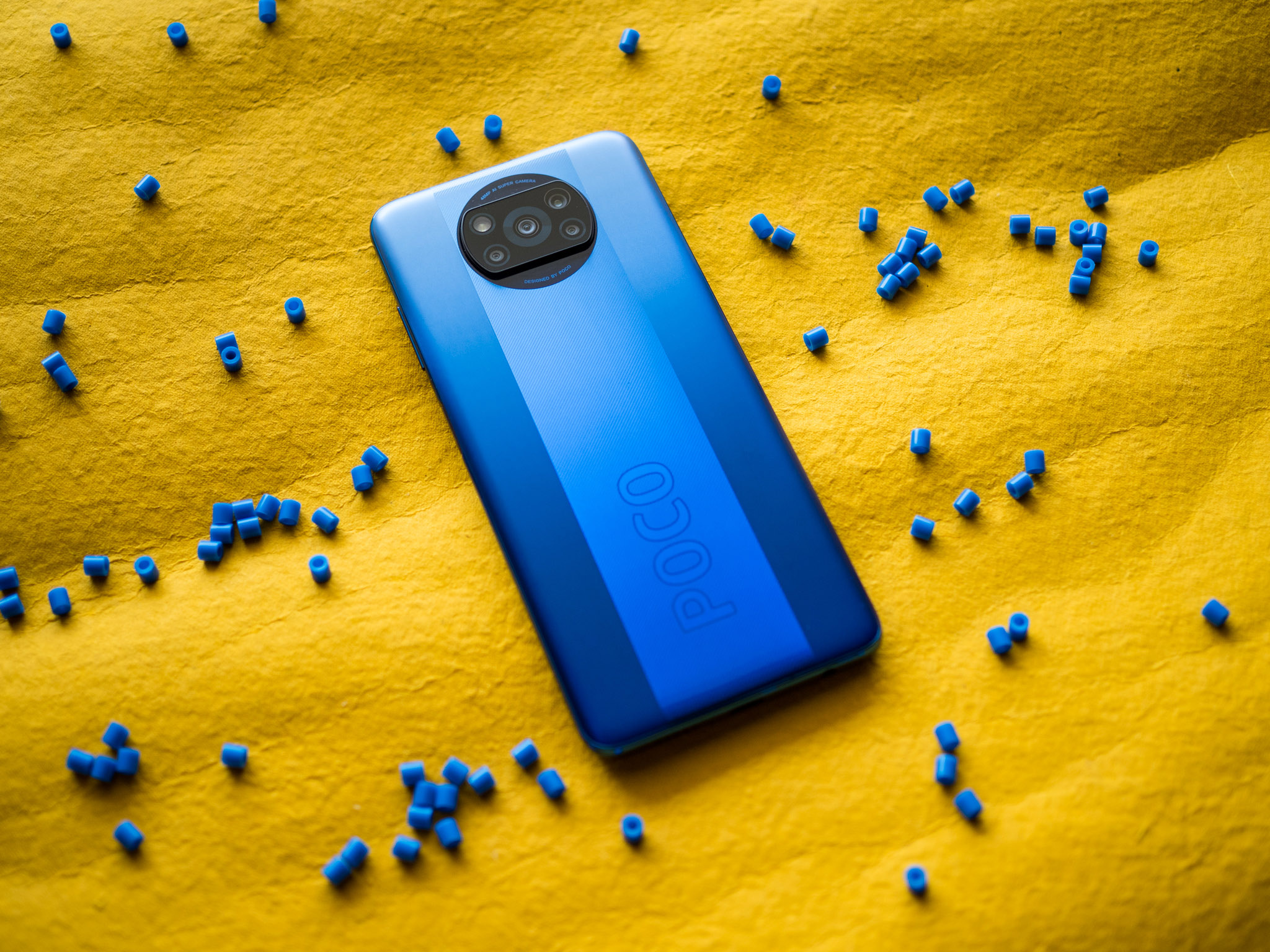
The POCO X3 stood out last year because it introduced an original design and wasn't a rebranded Redmi phone. Xiaomi is reusing the design here, and the POCO X3 Pro doesn't differ from the standard version on the design front. You still get a large phone with a massive battery, and the POCO branding at the back is just as prominent. With dimensions of 165.3 x 76.8 x 9.4mm and a weight of 215g, the X3 Pro is one of the largest and heaviest phones in this category.
The POCO X3 Pro is big, bold, and bulky — this is not a phone for one-handed use.
I have the Indian version of the POCO X3 — which includes a 6000mAh battery — and next to it the X3 Pro feels lighter and easier to use. The latter weighs 10g less, and that makes a significant difference in day-to-day use.
As for the design itself, you'll find a polycarbonate back with a textured stripe running down the middle, and with the POCO logo situated within the texture. The textured section has a subtle gradient finish, and it has a glossy coating whereas the sides have a matte finish. The four camera modules and LED flash sit within the rear camera enclosure, and the circular housing along with the two-tone finish give the phone a bold look.
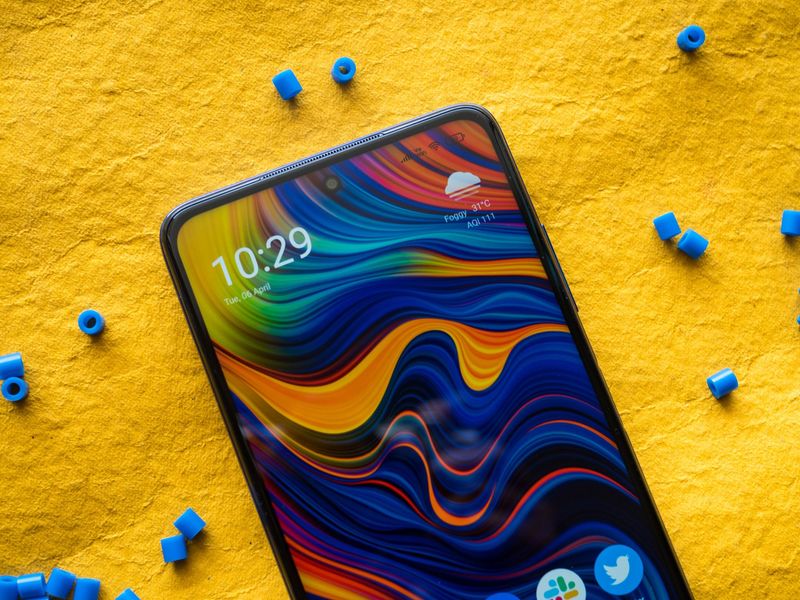
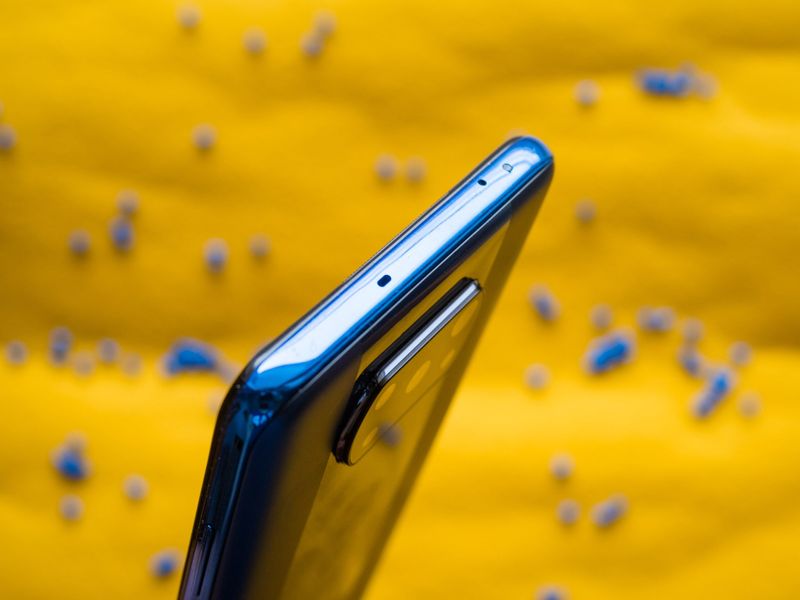
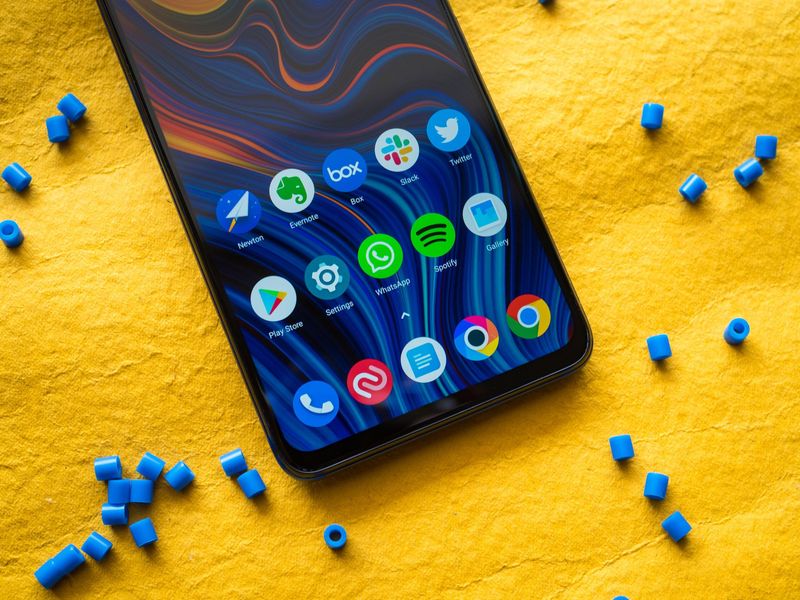
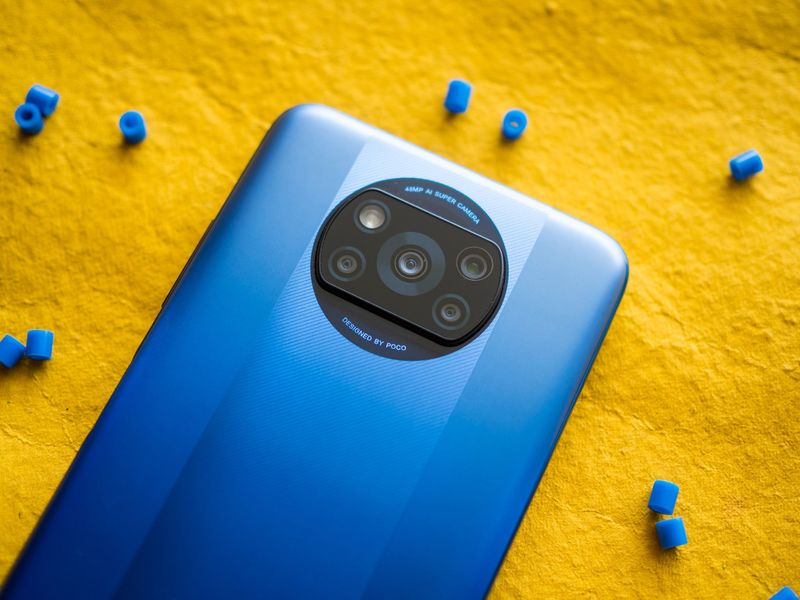
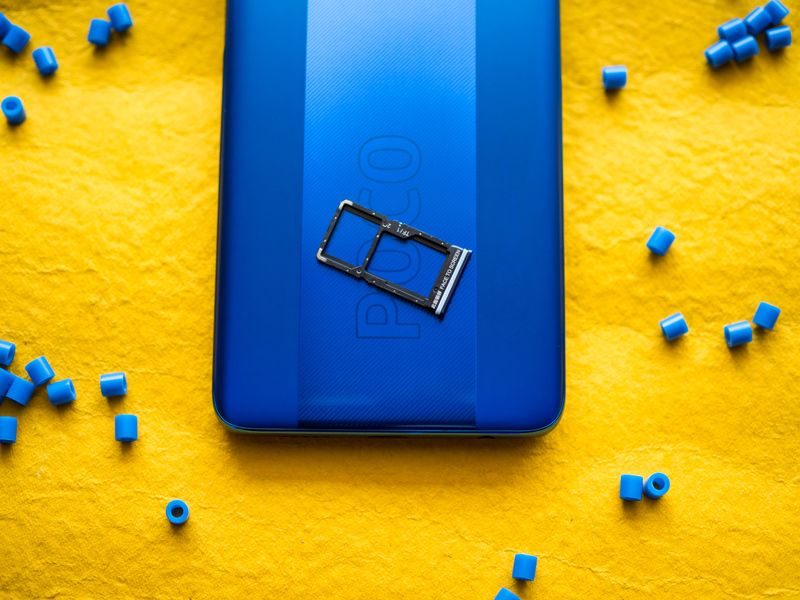
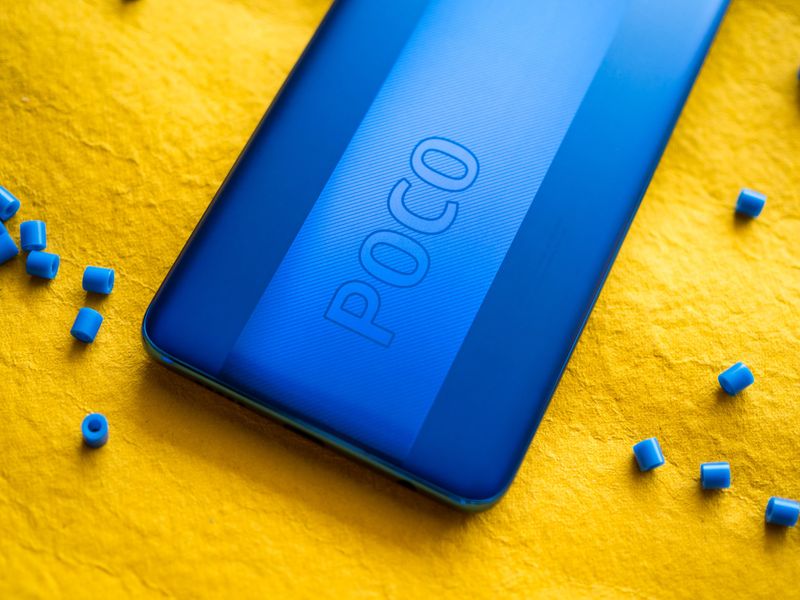
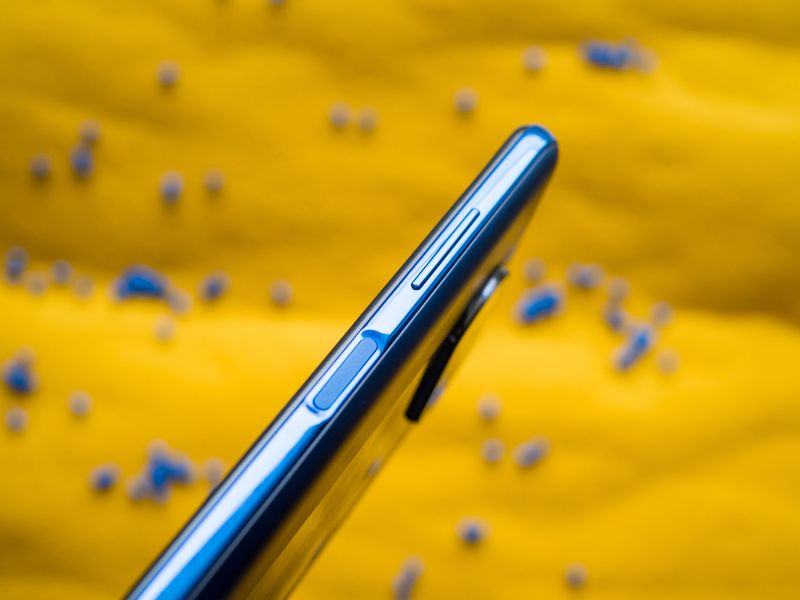
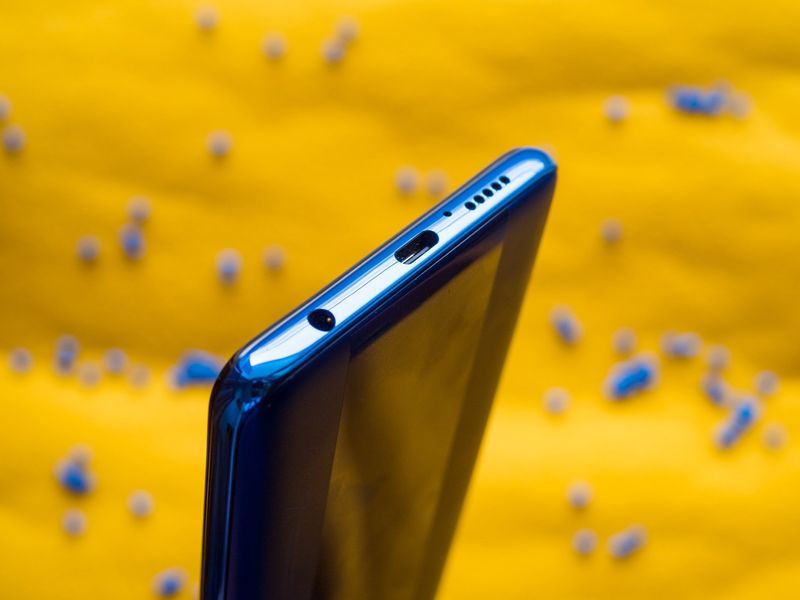
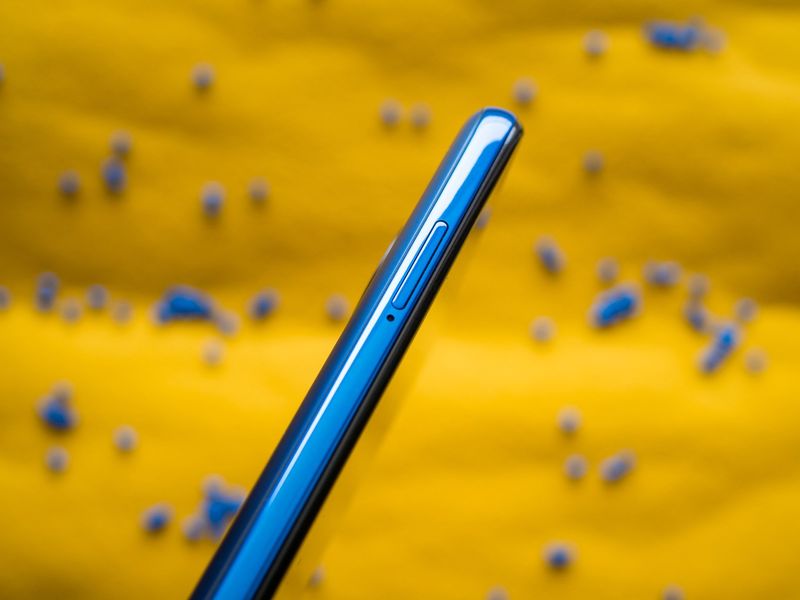
The sides of the phone gently curve as it meets the mid-frame, and that makes holding and using the X3 Pro that much easier. The frame itself is also made out of plastic and has a glossy finish. Like recent POCO phones, the X3 Pro also has a side-mounted fingerprint sensor that's baked into the power button, and you can easily locate the module thanks to the indent on the right.
The volume rocker is also on the right, and there's an IR blaster up top and a 3.5mm jack at the bottom. The phone has a hybrid SIM card tray that lets you use either two SIM cards or a single SIM along with a MicroSD card.
While the X3 Pro is heavier than most phones in this segment, Xiaomi nailed the basics: the curves at the back ensure a great in-hand feel, and the camera module doesn't protrude too much from the chassis, so there's no wobble when using the phone on a flat surface.
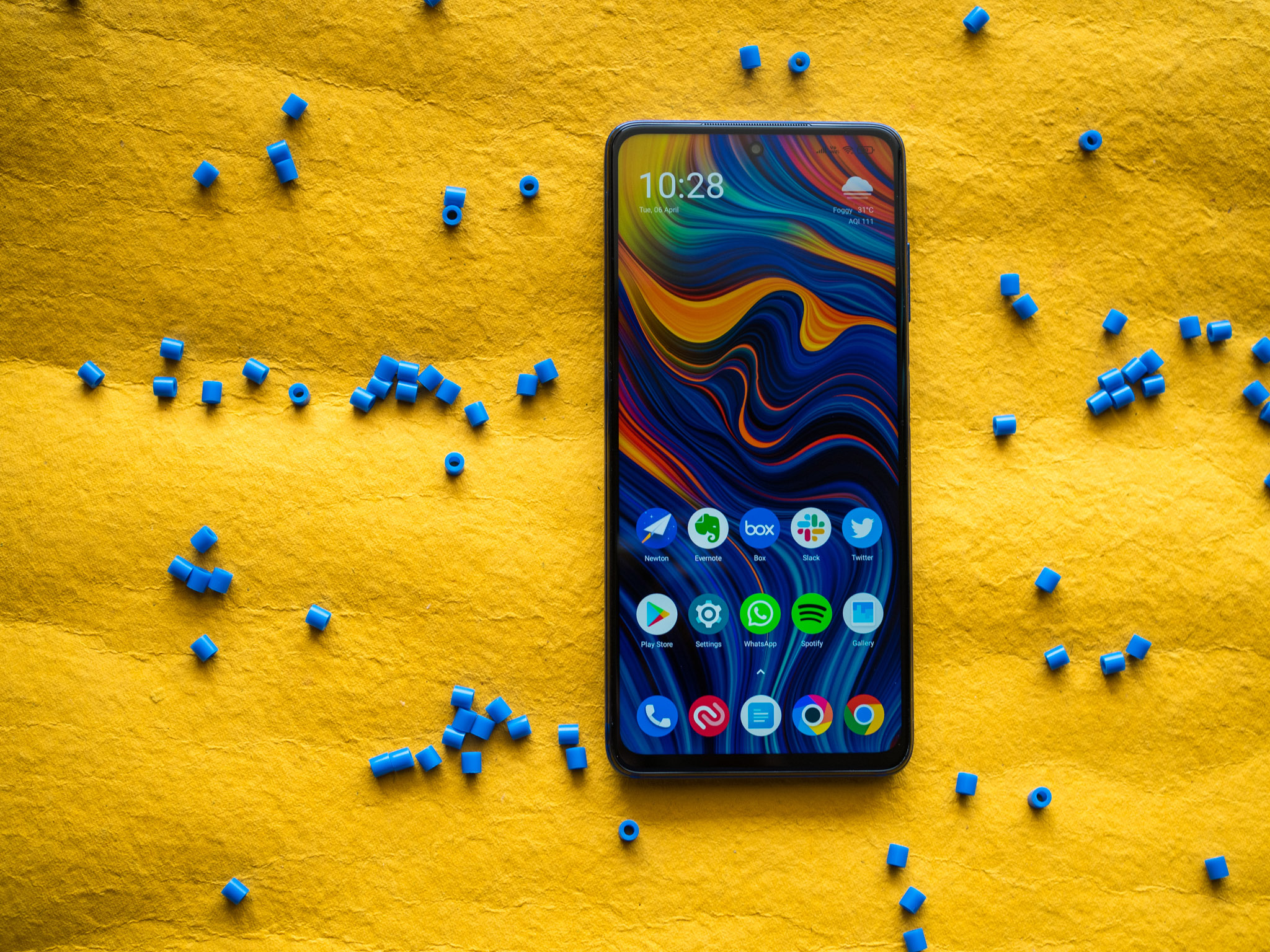
Coming to the display, the POCO X3 Pro has the same 6.67-inch IPS LCD panel as the regular X3. The screen has an FHD+ (2400 x 1080) resolution and 120Hz refresh rate, and while Xiaomi has a nifty adaptive refresh rate tech on the Mi 10T series, that particular feature hasn't made its way to the POCO X3 series.
By default, 60Hz refresh is selected out of the box, and you can switch to 120Hz from the settings. There is a big difference when switching over to 120Hz, but there is noticeable ghosting at times. Xiaomi offers plenty of customizability for the panel, and you can change the color balance, schedule dark mode, and use the text-focused reading mode.
The X3 Pro has thin bezels at the top, but the bottom bezel is noticeably wider, and there is a hole-punch cutout. You'll find a wide earpiece just above the panel, and this doubles up as the secondary speaker. The stereo sound is loud and detailed, and it makes playing games or watching movies that much more enjoyable on the X3 Pro.
As for the panel itself, it is one of the best LCDs you'll find in this category. It has vibrant colors and excellent contrast levels, and I didn't have any issues using it under harsh sunlight. The screen is protected by a layer of Gorilla Glass 6, and the phone comes with a factory-installed screen protector.
POCO X3 Pro: Performance and battery
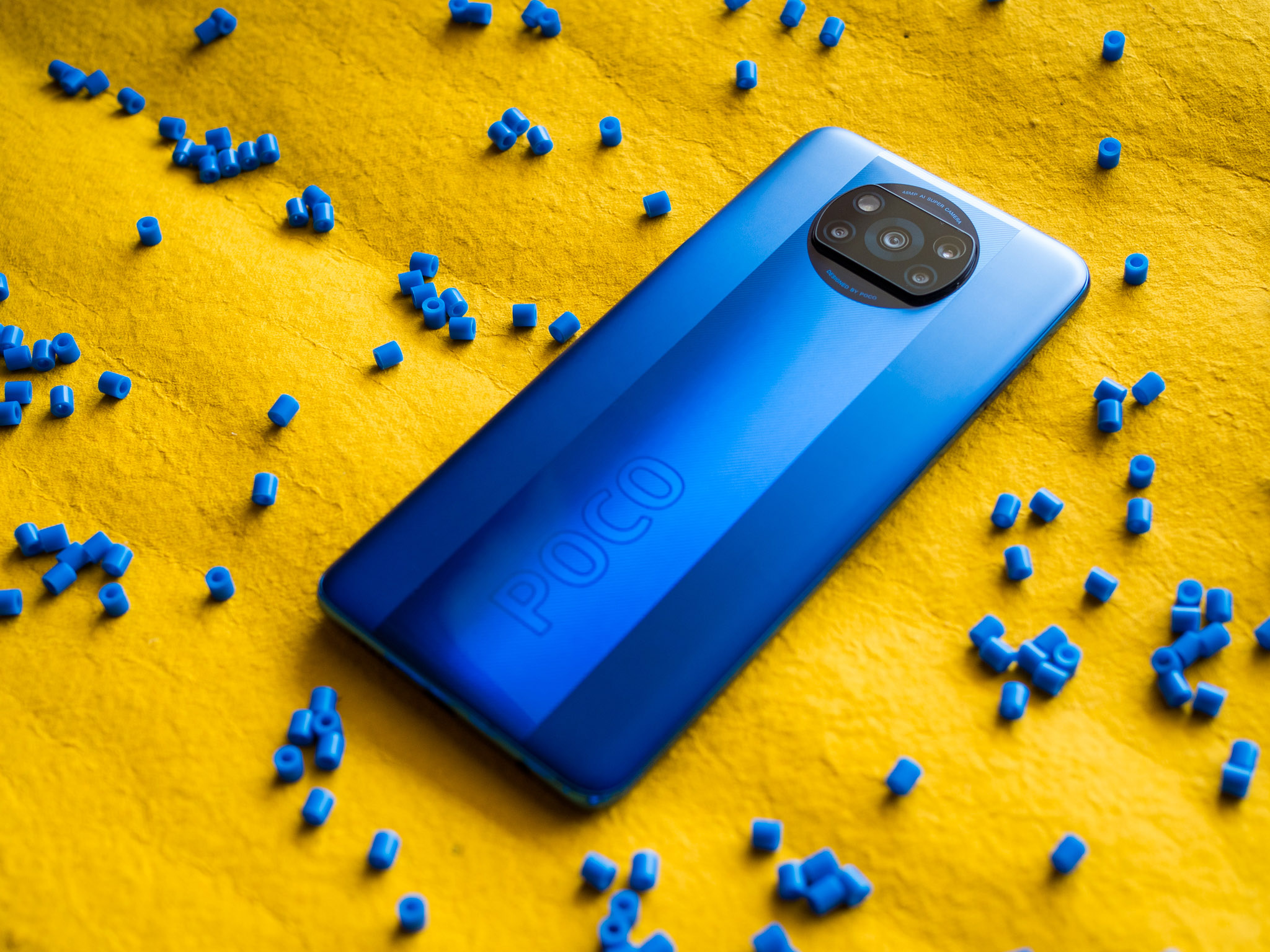
The marquee feature on the POCO X3 Pro is the Snapdragon 860 chipset. Although it's technically a new chipset, it is nothing but a rebranded Snapdragon 855+, and as such you'll find a single Cortex A76 core at 2.96GHz, three Cortex A76 derivatives at 2.84GHz, and four Cortex A55-based cores at up to 1.78GHz.
| Specs | POCO X3 Pro |
|---|---|
| Software | MIUI 12 based on Android 11 |
| Display | 6.7-inch (2400x1080) 120Hz IPS LCD |
| Chipset | 2.96GHz Snapdragon 860 |
| RAM | 6GB/8GB |
| Storage | 128GB/256GB |
| Rear Camera 1 | 48MP ƒ/1.8 (primary) |
| Rear Camera 2 | 8MP ƒ/2.2 (wide-angle) |
| Rear Camera 3 | 2MP ƒ/2.4 (macro) |
| Rear Camera 4 | 2MP ƒ/2.4 (portrait) |
| Front Camera | 20MP ƒ/2.2 |
| Connectivity | Wi-Fi ac, BT5.0, NFC |
| Battery | 5160mAh | 33W |
| Security | Side-mounted fingerprint |
| Colors | Frost Blue, Phantom Black, Metal Bronze |
| Dimensions | 165.3 x 76.8 x 9.4mm |
| Weight | 215g |
There's also the Adreno 640 GPU, and it is much more powerful than any of the Adreno 61x or 62x designs we've seen in this category of late. Qualcomm's decision to relaunch the chipset for 2021 is a smart move. The Snapdragon 860 has a built-in 4G modem, and the chipset is ideally suited for device makers that are looking to maximize the performance without switching over to a 5G-enabled platform.
What that means on the POCO X3 Pro is class-leading performance. The Snapdragon 860 is essentially a two-year-old chipset at this point — that's why the phone has Bluetooth 5.0 while the standard X3 has Bluetooth 5.1 — but it delivers standout performance where it counts. Thanks to the Adreno 640, the phone cruises through titles that handle over 60fps, like Dead Trigger 2.
In fact, the POCO X3 Pro crushes every other device in this category by some margin — outmatching the Snapdragon 732G-based Redmi Note 10 Pro Max, MediaTek Dimensity 800U-toting Realme X7, Helio G95 on the Realme 7, and the Snapdragon 720G on the Galaxy A52. Whether it's single or multi-core scores in Geekbench or 3DMark synthetic GPU tests, the X3 Pro handily beats its rivals.
Simply put, there isn't another device that comes close to the performance of the POCO X3 Pro. You're basically getting flagship-tier performance, and the fact that the phone is available for under $300 makes it a very attractive option.
There is no other phone in this segment that comes close to the performance of the POCO X3 Pro.
The X3 Pro handles day-to-day tasks without breaking a sweat, and it lets you play the most demanding of Android games without any lag or slowdowns. If you're looking to pick up a budget-focused phone for gaming, the POCO X3 Pro should be at the top of your list.
One of the ways Xiaomi was able to save costs with the X3 Pro is by limiting the number of LTE bands on the device. The Indian version of the POCO X3 Pro has LTE bands 1/2/3/5/8/38/40/41, and while that's adequate for 4G use in the country, it does limit the X3 Pro's potential for global roaming — not that it matters in these turbulent times. The global variant includes LTE bands 7/20/28 in addition to what the Indian model offers.
An interesting addition on the X3 Pro is IP53 dust and water resistance. While that doesn't mean you can submerge the phone, it is protected against dust ingress and sprays of water. It's great to see Xiaomi add some level of ingress protection to its phones. Talking about things that Xiaomi got right on the X3 Pro, the side-mounted fingerprint reader is fast and reliable in day-to-day use.
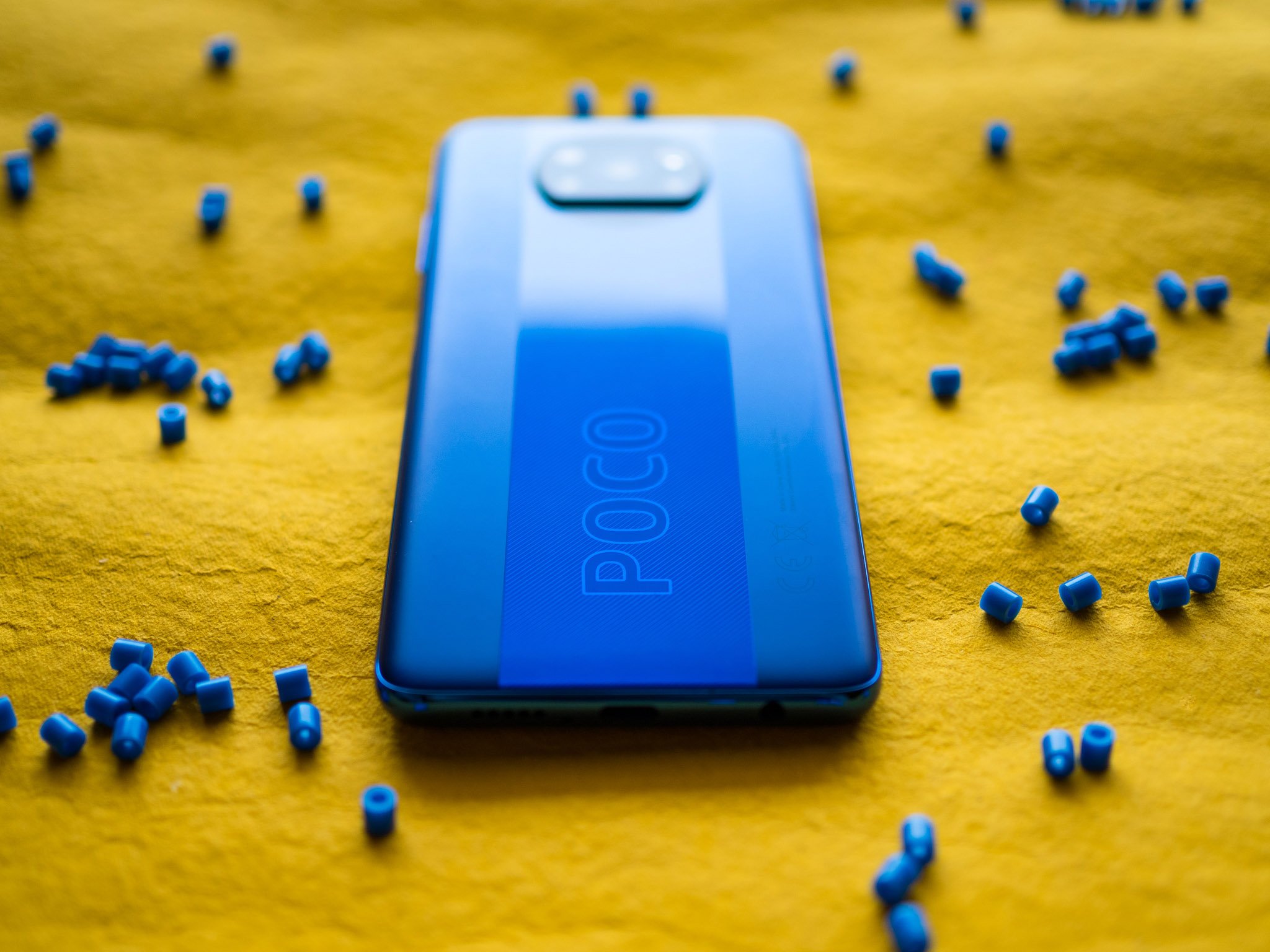
The phone has Wi-Fi ac connectivity, and like the regular X3, the X3 Pro misses out on NFC in India. That said, the global version I'm using does have the feature, so this particular limitation is only for the Indian model.
As for battery life, the X3 Pro comes with a 5160mAh battery with 33W fast charging — the same as the X3 NFC. The phone consistently offers over a day's worth of battery life even with heavy use, and I had zero issues in this particular area.
The massive battery means you don't need to worry about plugging in even after marathon gaming sessions, and when you do need to charge the phone, the bundled 33W charger takes 30 minutes to go from zero to 55% and a full charge in just over an hour.
POCO X3 Pro: Cameras
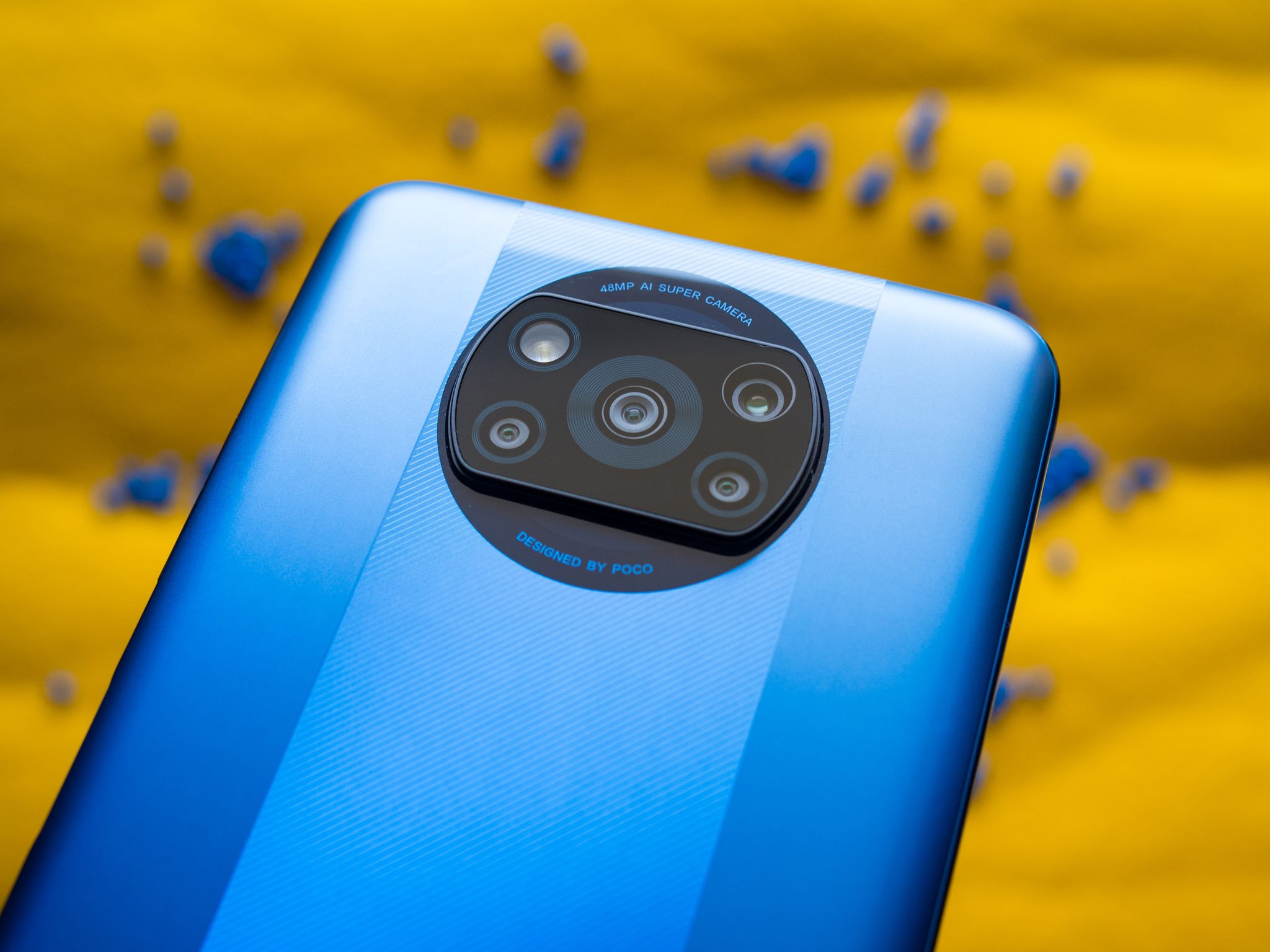
Like most phones these days, the POCO X3 Pro has four cameras at the back: you'll find a 48MP Sony IMX582 primary lens, 8MP wide-angle lens, and a 2MP macro along with 2MP portrait lenses. There's a 20MP camera at the front, and like previous years, it is a fixed-focus lens. As I've stated numerous times in other reviews, the 2MP fixed-focus macro lens is there just to round out the spec sheet, and is not really usable in most scenarios.
The camera interface itself should be immediately familiar if you've used a Xiaomi phone in the past. All the shooting modes are easily accessible, and you have toggles for HDR, flash, timer, AI, Google Lens, and switching between the various lenses. The macro mode sits behind the action overflow menu, and you can add shooting modes to the ribbon by heading to the More tab.
Like the standard X3, the X3 Pro lacks 4K video at 60fps, with the option limited to 1080p. The Snapdragon 855+ easily handles 4K recording at 60fps, but with Xiaomi positioning the phone as a gamer-focused option, it didn't leverage this particular feature.
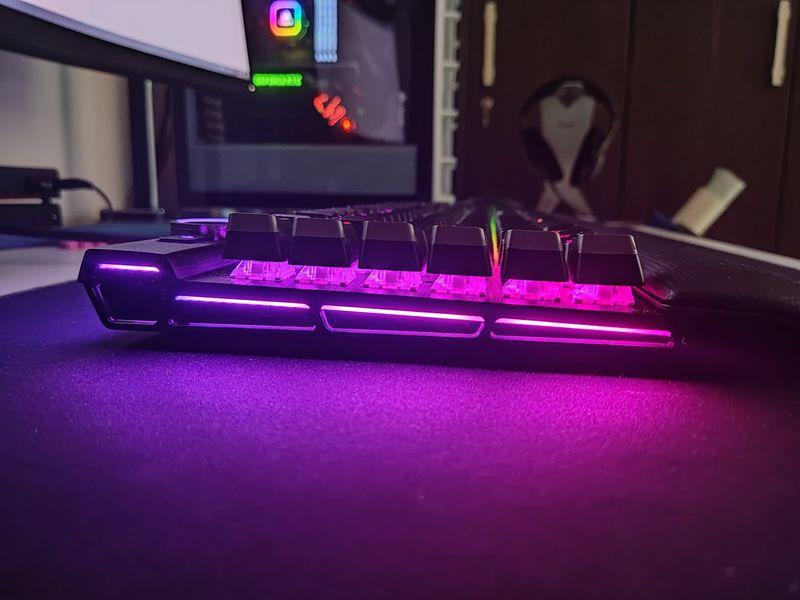
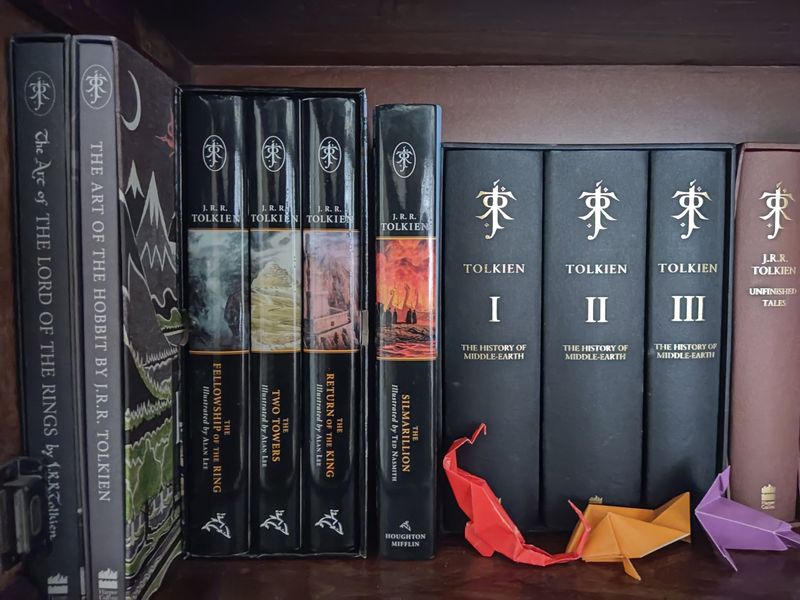

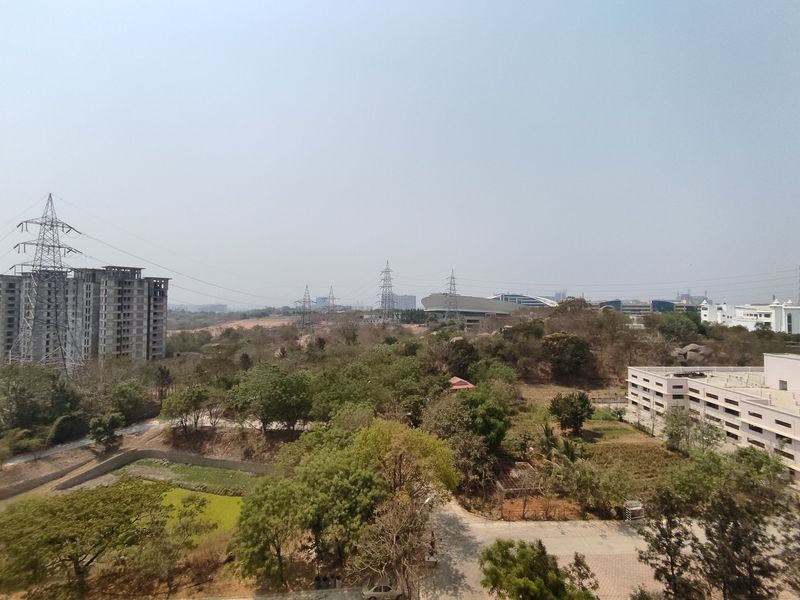
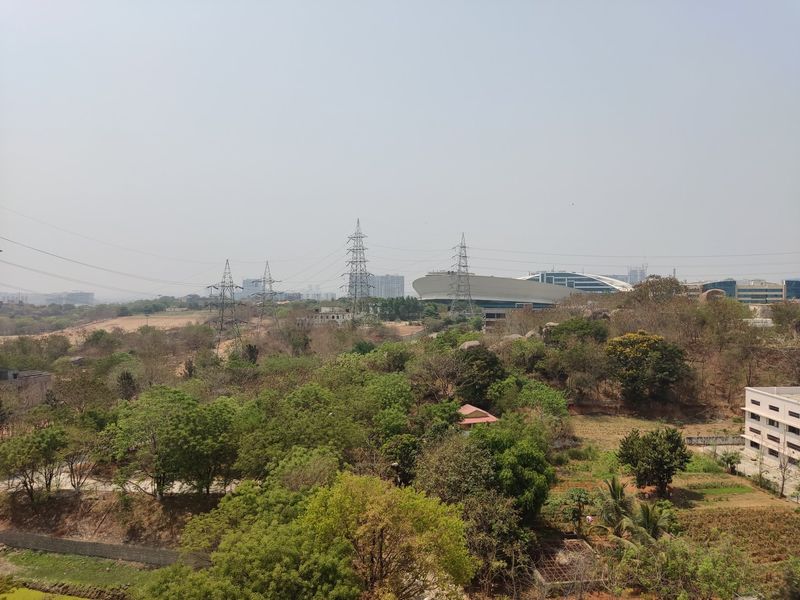

As for the photos, the X3 Pro relies on four-to-one pixel binning to produce 12MP shots — you can also use the full-res 48MP mode should you wish to do so. You get great photos in well-lit situations, with balanced dynamic range and accurate colors. The camera does a decent enough job in low-light scenarios as well, but the resultant photos are overly processed and miss out on details.
You can fix this particular issue by using the dedicated night mode; while it doesn't lead to noticeably better shots, at leas the images have better detail and decreased noise levels. The 8MP wide-angle lens also does a decent job in daylight, but it just doesn't measure up in artificial or poor lighting.
The cameras on the X3 Pro don't hold up against the Redmi Note 10 Pro Max, and even the standard POCO X3 takes better photos in a few situations. Xiaomi isn't positioning this phone as a camera-focused option, and that is evident in the resultant shots.
POCO X3 Pro: Software
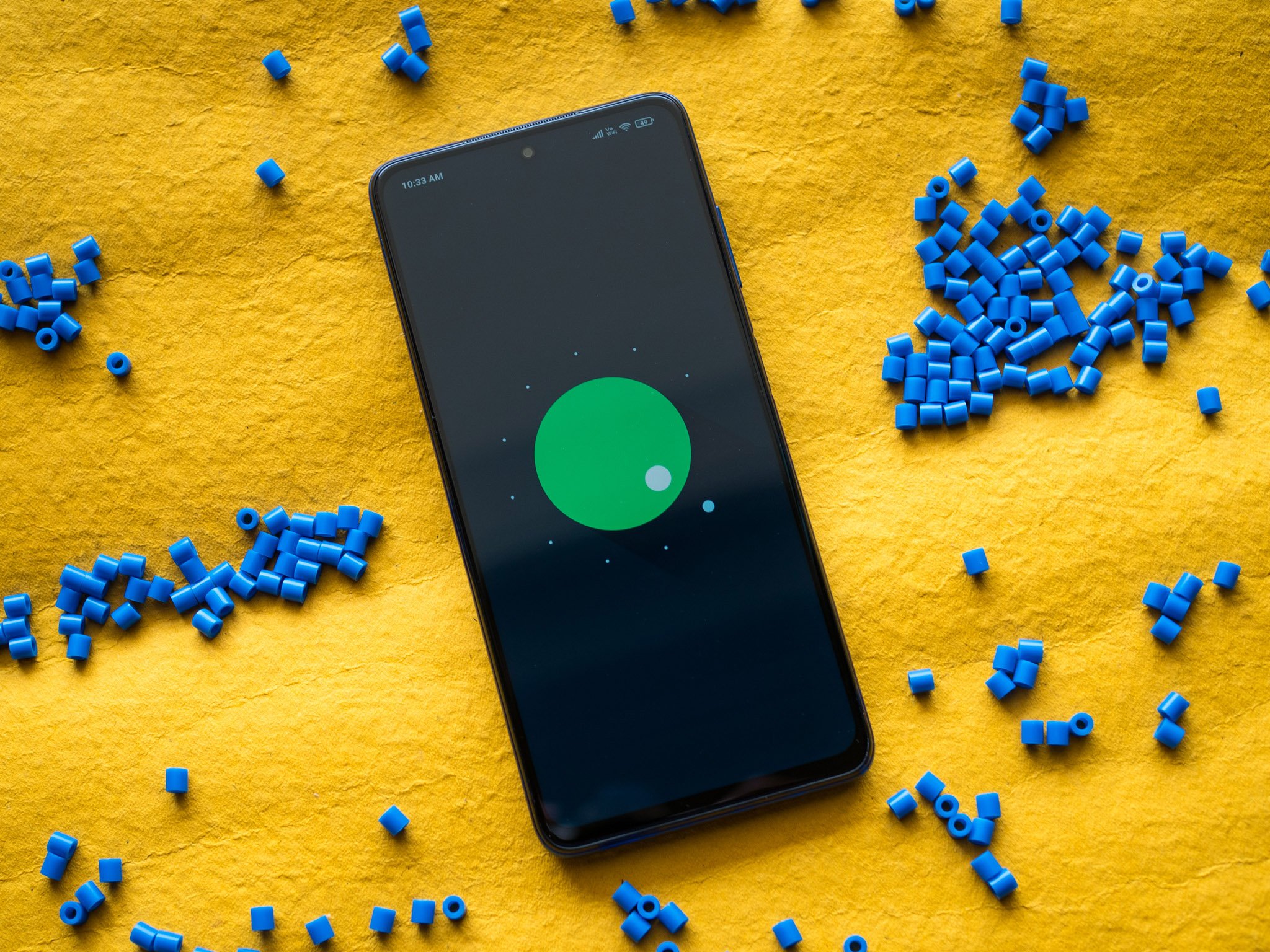
The main differentiator between POCO and Redmi is that the former doesn't include as many ads in the interface. MIUI for POCO is identical to MIUI, but you don't get incessant notifications or ads from the first-party apps. To its credit, Xiaomi is fixing the number of ads on the Redmi Note 10 series, and that is only set to get better with the upcoming MIUI 12.5 update.
MIUI 12 on the POCO X3 Pro is fast, fluid, and full of useful features.
The X3 Pro runs MIUI 12.0.2 based on Android 11 out of the box, and it includes all the new features Google introduced with the mobile OS. Xiaomi now has a new Control Center that is akin to what you'll find on iOS, but you can switch to the traditional notification pane that houses the toggles and shows incoming notifications in a single view.
There are a lot of features here; the new privacy hub makes it straightforward to see what services are using your phone's permissions, you get split-screen mode, floating windows, built-in app drawer, a robust theming engine, ability to use two instances of an app, and battery-saving modes. The app drawer automatically sorts apps into various categories, and you can easily change the order or delete these categories.
Overall, MIUI 12 gets a lot right, and it is a delight to use on the POCO X3 Pro. I didn't see any spam notifications during my usage, and the UI is well-optimized for the hardware. Xiaomi will deliver quarterly security updates and two platform updates, which is on par with the rest of the devices in this segment.
POCO X3 Pro: The competition
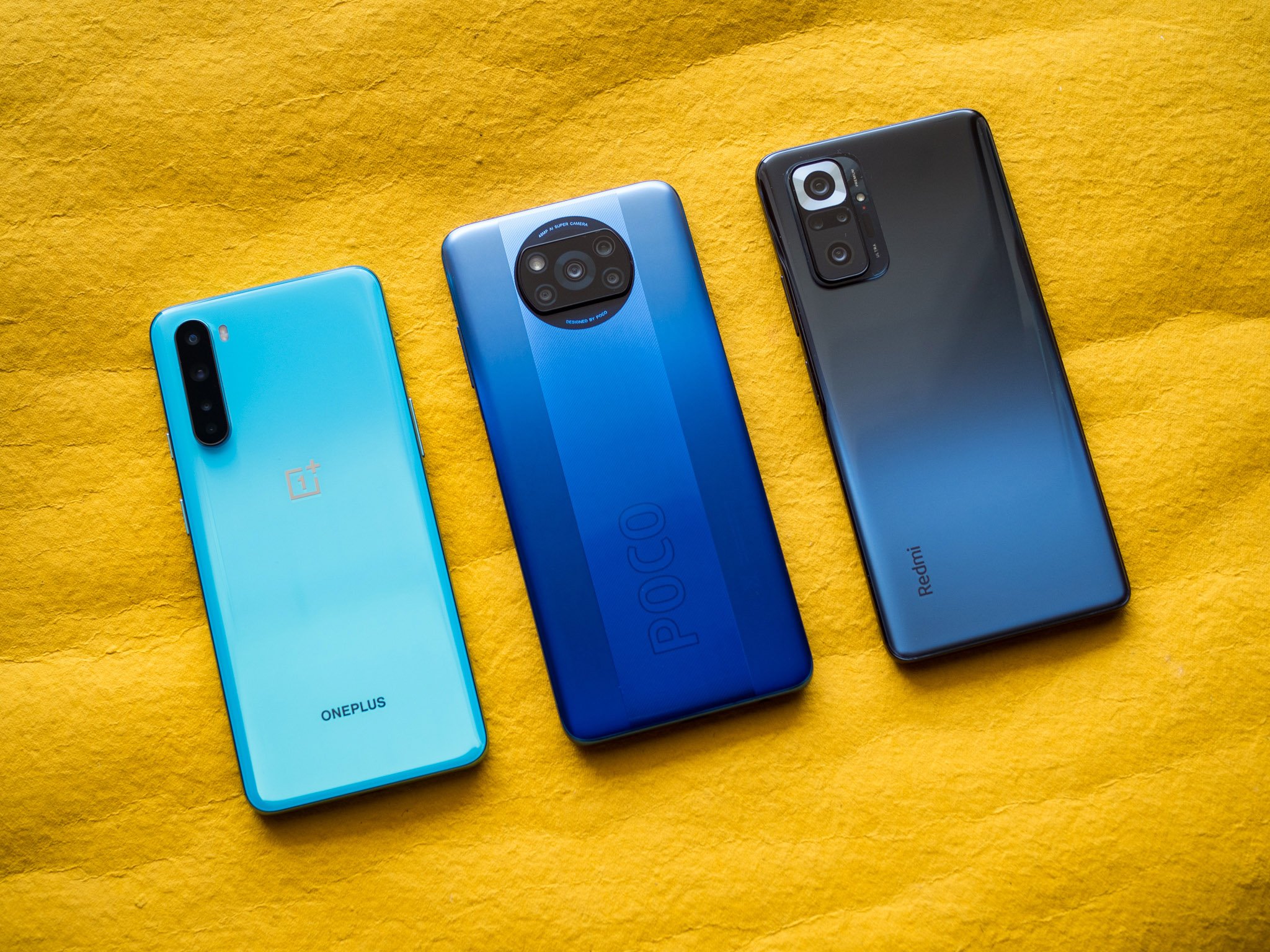
Xiaomi dominates this segment, and there are plenty of alternatives to the POCO X3 Pro. The regular X3 now costs ₹14,999 ($205) for the 6GB/64GB version, and you get better cameras and a larger 6000mAh battery with the same 33W fast charging. It isn't nearly as powerful as the X3 Pro, but if you don't see yourself playing a lot of games, it is a great option to consider.
Then there's the Redmi Note 10 Pro Max. The 6GB/128GB model costs ₹19,999 ($272), and you get a 120Hz AMOLED panel, much better 108MP camera, and a more premium design. The Redmi Note 10 Pro Max doesn't measure up to the POCO X3 Pro in terms of gaming, but if you want a higher-quality display and camera that takes standout photos, it is the ideal pick. The Redmi Note 10 Pro features a 64MP camera and is otherwise identical to the Note 10 Pro Max, and it starts off at just ₹16,999 ($230).
If you don't want a Xiaomi phone, Samsung has you covered with the Galaxy F62. The phone has a 6.7-inch 60Hz AMOLED panel, and it features an Exynos 9825 chipset with plenty of power and a 64MP camera that takes great shots. The standout feature is the gargantuan 7000mAh battery with 25W fast charging. The F62 costs more at ₹23,999 ($325), but then again, you are getting a lot of phone here.
In global markets, the OnePlus Nord is the ideal alternative to the POCO X3 Pro. The phone has a Snapdragon 765G chipset, 90Hz AMOLED, better cameras, 30W fast charging, 5G connectivity, and cleaner software.
POCO X3 Pro: Should you buy it?
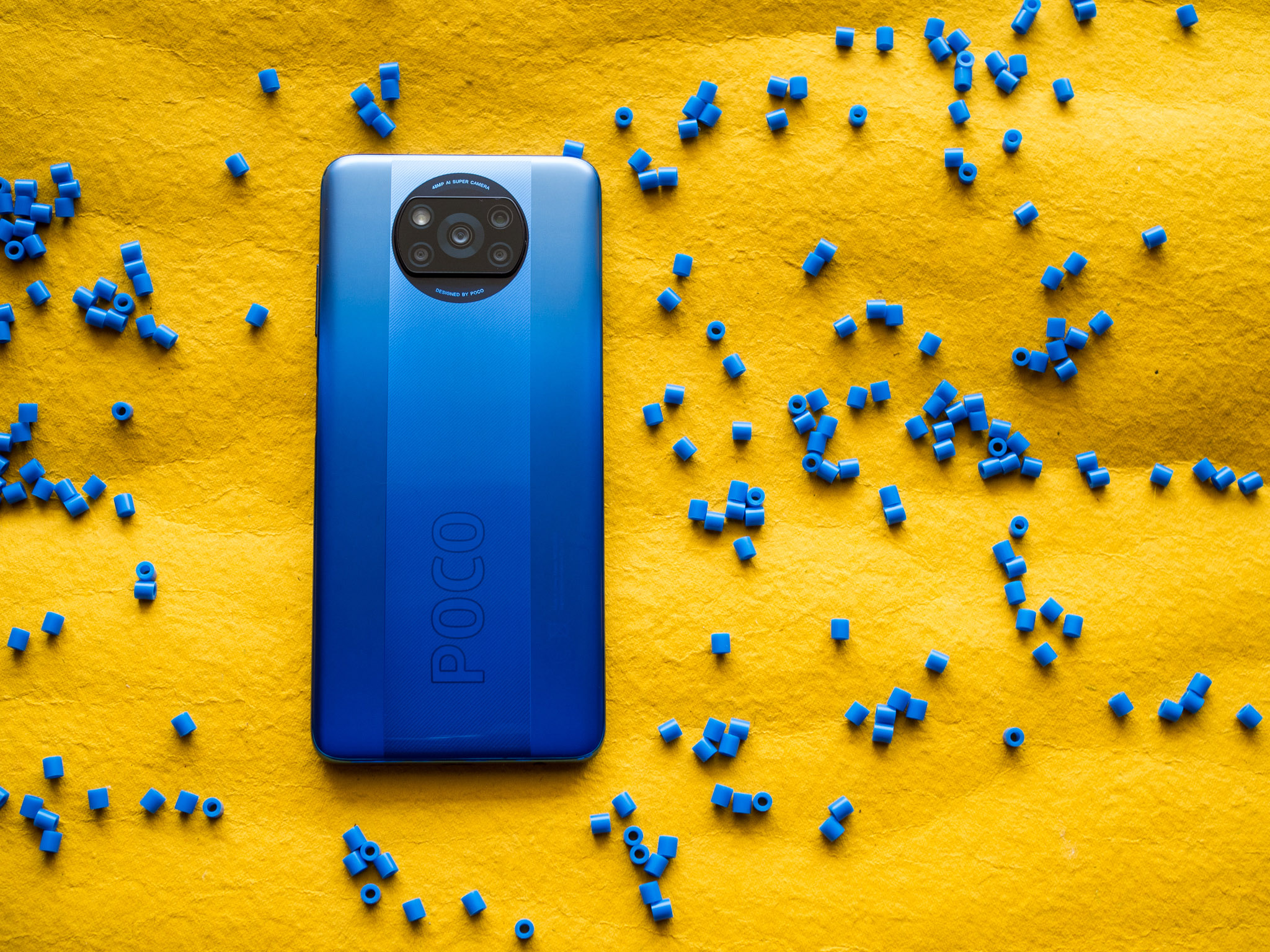
You should buy this if ...
You want the best performance
The POCO X3 Pro stands tall over other phones in this category; there isn't a device that offers the same caliber of performance. So if you need a phone for gaming or want a device that will deliver lag-free performance for several years, the X3 Pro is the default choice.
You need two-day battery life
With a 5160mAh battery under the hood, the POCO X3 Pro consistently delivers two-day battery life. You will easily get over a day and a half worth of use even if you're a heavy user, and with 33W fast charging, it takes just an hour to fully charge the battery.
You need the extras
The X3 Pro has a 3.5mm jack, IR blaster, stereo sound, and IP53 dust and water resistance. Xiaomi hasn't missed out on any of the essentials here, and that makes the phone a great overall package.
You should not buy this if ...
You need a great camera
The POCO X3 Pro takes decent photos, but it doesn't quite measure up to the Redmi Note 10 Pro or Pro Max in terms of camera quality. So if you see yourself taking a lot of photos, you may want to consider other options.
You need a compact phone
With a 6.67-inch screen and massive 5160mAh battery, the X3 Pro is one of the largest and heaviest phones in this category. It doesn't feel unwieldy, but it isn't conducive to one-handed use.
Apple opens Find My to third-party testing
06/04/2021 09:38 PM
Sony's LED Bravia TVs with 'cognitive intelligence' start at $1,299
06/04/2021 11:40 AM
Fender's Mustang Micro packs impressive amp modelling in a tiny package
06/04/2021 03:00 PM
The Mobile App Development Trends Defining The Industry In 2021
06/04/2021 08:33 AM
Latest Galaxy Z Fold 3 leak reveals a shocking display downgrade
06/04/2021 03:35 PM
Pick up a Samsung Galaxy A21 for just $149 ($71 off)
06/04/2021 03:28 AM
There's a way to upgrade an M1 Mac's memory and storage
06/04/2021 04:38 PM
- Comics
- HEALTH
- Libraries & Demo
- Sports Games
- Racing
- Cards & Casino
- Media & Video
- Photography
- Transportation
- Arcade & Action
- Brain & Puzzle
- Social
- Communication
- Casual
- Personalization
- Tools
- Medical
- Weather
- Shopping
- Health & Fitness
- Productivity
- Books & Reference
- Finance
- Entertainment
- Business
- Sports
- Music & Audio
- News & Magazines
- Education
- Lifestyle
- Travel & Local
2014 © US apps and news





